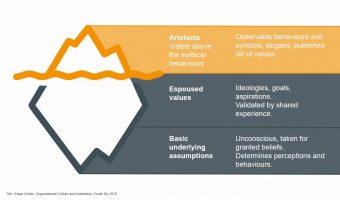News from in & around
The Clubhouse
How to overrule your gut instinct
It is estimated that our senses gather over 11 million pieces of information to communicate to our brain per second, yet the conscious mind seems to be able to process only 50 pieces per second. This means that we are filtering masses of information through our established system of beliefs and judging everything with an element of bias. But what is bias and why does this matter?
Bias is a combination of past experiences, subliminal desires, mitigating fears and a level of self-preservation that we have built up over our lifetime and it lurks in our unconscious mind. In order to live without bias and make our best decisions at work without bias, we need to be objective, informed and impartial. To do this we need to let our conscious mind overrule our ‘gut instinct’ and live by the facts in front of us, not intuition alone.
Dr. Brian Welle, a member of Google’s People Analytics team, has focused greatly on how unconscious bias is counter-productive and why we are conditioned to make decisions based on irrational and often unfounded thoughts. Here are four different ways to beat bias, according to Dr Welle:
1. Structure for success
Where there is a lack of structure in a system, there is more room for bias. To hedge your risks, make sure to articulate expectations and clarify requirements – especially when defining what success looks like in a role, what constitutes a successful interview, or what warrants an exceptional performance review. The more structured a process is, the easier it will be to remain objective in your decision making.
2. Collect data
If the first step is to admit that you have a problem, then the next is to find out where the issue is occurring. The only way to address potential biases is to measure them from the start. If you haven’t already, invest in tools to track your people data. This could include organisational demographics, performance metrics, and interview feedback. Use this data to drive process training and decision making. To squeeze out unconscious bias, use all the information available to help alleviate ambiguity.
3. Evaluate subtle messages
Even the smallest details can send indirect messages to potential candidates and employees. For example, are your recruiting materials truly representative of your workforce and do they emphasise diversity? What about your office decor – does it send a message of openness and inclusion? Which employees are frequently promoted and praised within your organisation? Many organisations are unaware of the subtle messages they’re sending and are unintentionally being exclusive.
4. Hold everyone accountable
Create an awareness around bias and hold everyone accountable. Start with yourself – which of these do you identify with?
a. Halo/Horns effect: being overly influenced by a single favourable or unfavourable trait
b. Similar to me: rating people more highly if they are similar to you
c. Self-serving biased: inflating ratings to make the manager look good
d. Perception bias: forming stereotypes and assumptions about certain groups that make objective decision making impossible.
e. Confirmation bias: seeking out information that confirms your pre-existing beliefs or assumptions.
f. Group-think bias: going along with the group and not voicing your individual thoughts and beliefs.
On an individual basis, Google suggests that managers give themselves a moment before making a final decision; it gives them an opportunity to question themselves and their actions. You can do this by writing things down or asking others for feedback before coming to a conclusion.
This article was originally featured in The Informer. To read the full magazine, please click here.


